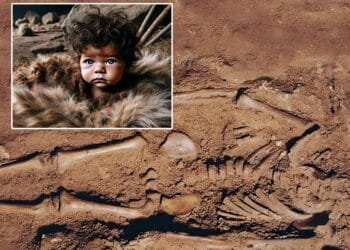German authorities handed back 75 Indigenous archaeological artifacts to the government of Mexico, according to a report in The Art Newspaper.

The repatriation, part of an ongoing effort, involved the voluntary return of 74 items by the Museum Schloss Salder in Salzgitter, Lower Saxony, and the confiscation of one item by customs agents in Leipzig.
These artifacts, mainly linked to the Huasteca culture of eastern Mexico and ranging from 500 to 2,000 years old, were initially collected 120 years ago by a German national involved in well-drilling near Mexico’s Gulf Coast.
Diego Prieto Hernández, the head of the National Institute of Anthropology and History (INAH), explained that the objects were donated to the Museum Schloss Salder in 1963, with their origins traced back to the Huastecan civilization, a Mesoamerican Indigenous group that still maintains its dialect spoken by 66,000 people today.

One noteworthy repatriated item is a 4,000-year-old stone mortar tripod seized by customs officials in Leipzig. The artifact, intended for a recipient who failed to provide the necessary certification, underscores the challenges in preventing the illegal trade and exhibition of cultural assets.
“Taking these archaeological pieces as souvenirs or decorative items is an affront to the native peoples. Their restitution not only guarantees their preservation and study but also returns a fundamental part of their historical memory to our Indigenous communities,” said Mexico’s ambassador to Germany, Francisco José Quiroga Fernández.
This repatriation marks another milestone in President Andrés Manuel López Obrador’s administration, bringing the total number of archaeological artifacts returned to Mexico to 13,422. The administration’s #MiPatriaNoSeVende (“My Heritage Is Not For Sale”) campaign, launched in 2018, has played a pivotal role in raising awareness and encouraging voluntary returns.
In August, a Belgian citizen returned 20 archaeological goods, citing inspiration from the campaign. Additionally, the School of Advanced Research in Santa Fe, New Mexico, returned 60 artifacts in October, originally donated by a private collector.
The success of these efforts is reflected in the global impact, as the repatriation has gained attention and cooperation from individuals and institutions worldwide. The School of Advanced Research in Santa Fe, New Mexico, played a crucial role in returning 60 artifacts, emphasizing the collaborative nature of international efforts to preserve cultural heritage.

The significance of the ongoing repatriation was underscored by the return of Chalcatzingo’s Monument 9, known as the “Portal of the Underworld,” in May. This 2,500-year-old Olmec monument, a long-standing priority in Mexico’s repatriation endeavors, was successfully brought back to its rightful home.
The collaborative efforts between nations, driven by campaigns such as #MiPatriaNoSeVende, continue to make strides in rectifying historical injustices and ensuring the protection of Indigenous communities’ cultural legacy.




























